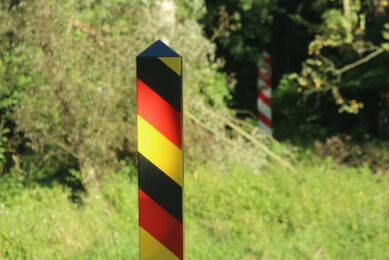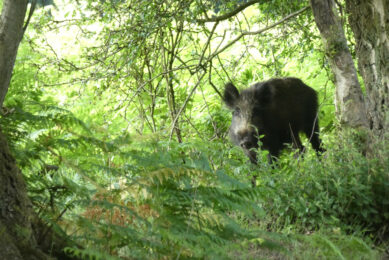What the textbooks don’t tell you about… Farming sows in groups.
Coming from Britain, which like the Scandinavian countries has banned the gestating sow-stall, our dry sows are now housed in groups. It seems strange that little is written about this undoubted future trend, brought about by the welfare lobby, like it or not. Some of us now have at least 20 years of experience (I hesitate to say ‘mistakes’ but as a trouble-shooter in this area, there have been quite a few!) of keeping sows in groups profitably and from the sow’s viewpoint – comfortably.
By John Gadd
Problems?
At first the problems seem daunting. The sow can be a very heavy and aggressive animal, at least to other sows. Given her new-found ‘freedom’ to move around, she does! Then there was the question of achieving the correct daily feed intake for a wide range of body condition and submissiveness/ nervousness / competitiveness within the group and the problem of identification, inspection, selection and movement, so much easier when gilts and pregnant sows are confined in a stall.
Still problems, but…
To our credit, all these hurdles have at last, on the whole been overcome. If problems remain, they can be rectified and in my experience our mistakes today are usually ones of management (planning and lack of investment) or stockmanship (lack of time, rather than lack of skill or interest). Those of us who have surmounted these hurdles and who are ‘sailing clear’ now admit – no ‘admit’ is too negative a word, ‘enthuse’ is a better one – because enthuse they do that the sows are so much happier and productivity now outshines those sows we still see stalled in other countries (including mainland Europe). Stockpeople are also better pleased with their job; they stay on and you don’t have to worry about finding replacements for skilled work people, which is a major headache today.
Three-phase process
First, thinking and preparation phase (3 years). Having to prepare the ground from moving from a stall-bound breeding unit to a group-based one, and then financing and making the change. Possibly liking the major housing change with a move to depopulate, enforced or otherwise?
Having converted the buildings, you enter what I call …’The doing phase’ (5 years). Learning to manage sows in groups so that aggression is minimized and pig flow maintained. Quite a learning curve, which can take this long before the feeling of ‘sailing clear’ appears.
Third, the refining phase (4 years). Refining the management to contain costs; bedding, food waste, identification, manure storage and disposal etc.
Lessons learned
Here then are some of the main lessons learned. I give ten or so of these, but within each category are four or five sub-sections of individual advice that has to be followed up.
Choose a docile breed
Never be parsimonious with space. Your group-housed unit will probably be 2.5 times larger than your sow stall area.
Bedding – with all its labour cost etc – is far preferable than solid/slatted concrete, even if well made.
For sow groups, older buildings – properly internally converted – are perfectly satisfactory. Do not waste your money on ‘built-from-new’ palaces. It will not harm your cash flow, so invest the money elsewhere.
Provide for the timid sow or gilt in a variety of ways.
Sows in yards need better stockmanship (observation, patience, agility) than sows in stalls. And about on-third more time to do a good job, but hour-for-hour there is no comparison – the result will almost always be much better. And you will be proud of them!
If you use the electronic sow feeder stations, choose a modern, robust model, not forgetting that there are several other systems as alternatives.
Dynamic groups, where sows/ gilts are introduced and removed continuously, are best. Rather than the static group where batches of sows remain together. The latter is theoretically better but difficult to maintain. The dynamic system is also difficult to maintain, but superior when it is done skillfully and well. It is possible to run a dynamic system with sized, sub-groups (ie ‘large sows’ and ‘smaller sows’). Generally, 1000 sow herds make this idea easier.
Gilts need special accommodation, training/ mixing pens and special diets.
The problem of mixing sows; there is now a great deal known about mixing sows successfully. Research this knowledge carefully. I find British and Scandinavian farmers who still get into trouble have not taken full advantage of all the hard-won experience. It is not difficult to make things better for them when the knowledge gaps are filled.
Three key words
Really, the key to successful sow group housing could lie in just three words…. Space, straw, stockmanship!











